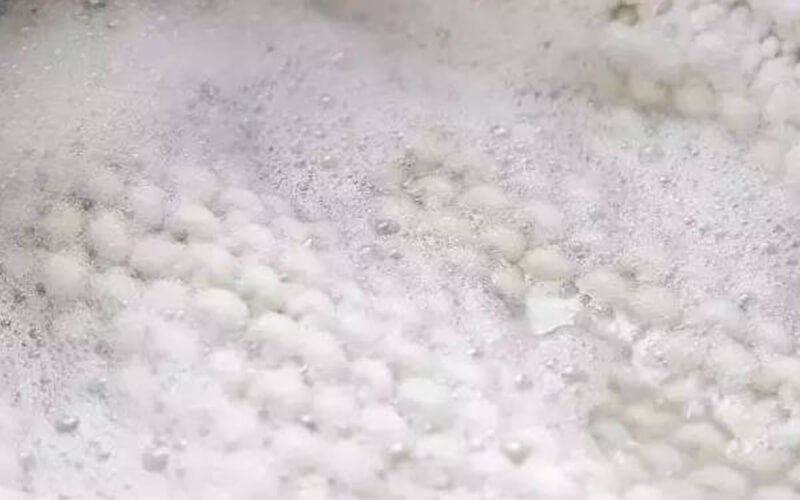Cashmere fabrics are relatively precious, so here are the precautions for cleaning and drying cashmere fabrics. We also introduce a simple way to identify cashmere and wool.

cashmere vs wool
Cashmere fabric cleaning
Generally, cashmere sweaters are best dry cleaned, but can also be hand washed. Put the special detergent into 35 ℃ water and stir well, put the soaked cashmere sweater into the soak for 15-30 minutes, and then use a high concentration of detergent to squeeze and knead at the key dirty places and collar cuffs, and gently pat the rest of the parts.
If it is stained with coffee, juice, or blood, send it to a specialized laundry. After rinsing with water at about 30℃, you can put the softening agent according to the instructions to make it feel better. Squeeze out the water inside the washed cashmere sweater and put it into a net pocket to dewater in the washing machine’s dewatering cylinder.
Drying of cashmere fabrics
Lay the dehydrated cashmere sweater flat on a table with a towel quilt and dry it by hand in its original shape, using a ruler to measure it to its original size, and never hang it for exposure.
After drying, use a medium temperature (140℃ or so) steam iron to iron the cashmere sweater, leaving a distance of 0.5~1cm between the iron and the sweater, avoid pressing on it, if you use other iron, you must pad it wet.
Cashmere fabric preservation

cashmere fabric
Cashmere must be washed, ironed, and dried before preservation, otherwise, it is easy to grow mold and moths Oh. You can use plastic bags to cover the flat in the closet. Remember to put camphor tablets, anti-moth, and anti-mold tablets in the closet around Oh.
cashmere vs wool identification methods are different
For the average consumer, it is impossible to directly identify cashmere fiber and wool effectively.
Some people have said that you can use the burning method to identify cashmere and wool, but the president still has to regret telling you that this method is not very accurate.
The reason: wool, cashmere belong to the wool fiber, the main component is keratin, burning will emit similar to the smell of burnt human hair. So by this is not identified.
However, the combustion method can be used to identify chemical fibers and wool fibers. Twist the residue after burning with your fingers, if it contains hard particles that are not fragile, and burning with a smell similar to burning plastic, it also contains chemical fiber components, the more such particles, the higher the chemical fiber content.
The comparison of real wool and fake wool after burning.
The first thing you need to do is to try the following. You can try the following identification methods.
look at the color
The color of imitation cashmere is bright and harsh, and the visual effect of chemical fibers at a glance; cashmere is soft and has the natural luster of animal fibers.
Touch feeling
Imitation cashmere products are slippery but not soft, elastic but not fluffy; while cashmere has good skin-friendly and moisture-absorbing properties, in contact with the skin, the body feels very comfortable glutinous and smooth.
Look at the fiber
Fibers are the most important way to identify real or fake cashmere. Imitation cashmere and fake cashmere are mixed with chemical fibers that are long and straight, without any curl, and not easy to break; while natural cashmere fibers have obvious curl and shorter fiber length.
Look at the price
This kind of precious and rare fiber, which is priced in grams in the trade, will not be cheap in any case. Those cashmere luxury goods come even less, the price is not more than 10,000 are embarrassed to take out to sell.
The price of pure cashmere is more than 100 USD/kg, while the price of wool is not more than 10 USD/kg, a difference of about ten times the price. Even extra-fine mercerized wool is not more than $20 / kg, in there are processing costs price is about $1.3 / g, at this point you can calculate according to the weight of the clothes.
The above is still just the cost price oh!
So do not believe that 100 dollars money can buy a cashmere sweater!
Look at the hangtag label
From the hang tag to see the composition of this is very simple, but it is worth noting because pure cashmere is more expensive, so some cashmere products may be blended, the hangtag will generally indicate the percentage of blended.
Sometimes the washing mark will also be marked on the material
WS: Cashmere
W: Wool
AL: Alpaca alpaca
M: Mohair Mohair
S: Silk
N: Nylon (Nylon)
MD: Modal Modal
A: Acrylic Acrylic